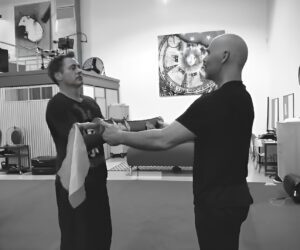Step-by-Step Beginner’s Guide to Exploring the World of Martial Arts
One of the first steps in your martial arts journey is choosing the right fighting style that aligns with your goals, interests, and physical abilities. Here’s how to navigate this crucial decision:
1. Research and Exploration: Begin by researching different martial arts styles. Each style has its unique techniques, philosophies, and focus areas. Some popular styles include Karate, Taekwondo, Jiu-Jitsu, Muay Thai, and more. Look into what each style entails and consider which aspects resonate with you the most.
2. Visit Local Studios: Take advantage of trial classes or introductory sessions offered by local studios. This hands-on experience will give you a taste of what each style feels like and help you assess your comfort level.
3. Consult with Instructors: Don’t hesitate to ask questions when attending trial classes. Instructors are there to guide you and can provide insights into which style might be the best fit for you.
Finding the Right Dojo or Studio: Your Training Sanctuary
Once you’ve narrowed down your preferred fighting style, it’s time to find the right dojo or studio to begin your training. Consider these factors when making your choice:
1. Instructor’s Experience: A knowledgeable and experienced instructor is essential for proper guidance. Look for instructors with a credible background and a teaching approach that resonates with you.

2. Class Atmosphere: Visit potential dojos or studios during class hours to observe the atmosphere. An encouraging, respectful, and inclusive environment is crucial for an effective learning experience.
3. Class Schedule and Location: Choose a dojo or studio with a class schedule that fits your routine. Consider its proximity to your home or workplace for convenience.
Basic Etiquette and Dojo Rules: Navigating the Training Space
Entering a martial arts dojo comes with a set of etiquettes and rules that contribute to a positive learning environment:

1. Respect: Show respect to your instructors, fellow students, and the dojo itself. Bow as a sign of respect when entering and leaving the training area.
2. Punctuality: Arrive on time for classes to show commitment and avoid disrupting ongoing sessions.
3. Hygiene: Maintain good personal hygiene by wearing clean training attire and ensuring your nails are trimmed.
Fundamental Techniques: Building a Strong Foundation
As a beginner, focus on mastering the fundamental techniques of your chosen fighting style:
1. Stance and Footwork: Learn the proper stances and footwork that form the foundation of your chosen style. This is crucial for balance, mobility, and effective execution of techniques.
2. Basic Strikes: Familiarize yourself with basic strikes, such as punches and kicks. Work on your technique, form, and accuracy.
3. Blocks and Defenses: Understand how to block and defend against various attacks. Proper defense is essential for both self-protection and counterattacks.
4. Breathing and Focus: Learn how to control your breathing during training to enhance your stamina and focus. Proper breathing techniques also help you remain calm and composed.
Consistent Practice and Progression: Your Martial Arts Journey
Consistency is key to progress in martial arts. Here’s how to make the most of your training:
1. Regular Practice: Attend classes consistently to reinforce your skills and techniques. Practice at home to further enhance your understanding.
2. Set Realistic Goals: Set achievable goals for your martial arts journey. Progress takes time, so celebrate small victories along the way.
3. Open-Mindedness: Keep an open mind and be receptive to learning from your instructors and fellow students. Martial arts is a continuous learning process.
Conclusion: Your Path to Mastery
Embarking on the path of martial arts is not merely about learning physical techniques; it’s a journey of self-discovery, personal growth, and empowerment. As you step onto the training mat, you’re not just learning how to punch or kick; you’re immersing yourself in a centuries-old tradition that encompasses physical, mental, and emotional development.
In your martial arts journey, you’ll encounter challenges that test your limits, victories that boost your confidence, and moments of introspection that shape your character. Each technique you master is a testament to your dedication, discipline, and perseverance. Beyond the kicks and punches, you’ll discover the power of focus, the art of patience, and the importance of humility.
Remember that progress in martial arts is not always linear; it’s a winding road filled with highs and lows. Celebrate every milestone, no matter how small, and acknowledge that setbacks are part of the learning process. Martial arts teaches you resilience—the ability to rise after a fall and keep moving forward.
Along the way, you’ll forge connections with fellow practitioners who share your journey. The dojo becomes a community—a place where friendships are formed, support is offered, and growth is celebrated. Your instructors will become mentors, guiding you not only in technique but also in life lessons that extend far beyond the training mat.
As you continue your martial arts journey, recognize that mastery is not a destination but a constant pursuit. The belts you earn are symbolic of your progress, but the true essence of martial arts lies in the transformation you undergo as an individual. With each strike, each block, and each technique, you’re sculpting a better version of yourself.
So, step onto the mat with an open heart and a curious mind. Embrace the challenges and the sweat, for they are the sculptors shaping your potential. Whether you’re drawn to the artistry of forms, the adrenaline of sparring, or the mindfulness of meditation, martial arts has something unique to offer you.
Ultimately, your martial arts journey is a reflection of life itself—a journey of growth, self-discovery, and continuous improvement. As you stand at the crossroads of technique and philosophy, let the wisdom of martial arts guide you in all aspects of your life. With dedication, passion, and the warrior’s spirit, you’ll find yourself not only mastering fighting styles but also mastering the art of living fully and authentically.

